|
|
 Feature Article... Close-up Photography with the Sigma 300/4
Text and Photography Copyright Riccardo Polini.
Most 300mm lenses can focus at 2-2.5 meters. So, the maximum reproduction ratio is around 1:7. A few years ago, Sigma introduced the AF 300/4 Apo Tele Macro. This lens employs internal focusing (IF) and a floating element design, with a 1:3 reproduction ratio at 1.2 m. The working distance, i.e. the distance between the front element and the subject, is about 1 m and this feature immensely helps when shooting shy animals in their natural habitat. In order to further increase the maximum reproduction ratio (R) I often use either a 27.5 mm extension tube (Nikon PK-13) or a 1.4 X teleconverter (Nikon TC-14 A). Sometimes I use both, with the extension tube between the lens and the teleconverter. Table 1 shows the R values as a function of the focusing distance and with different accessories coupled to my Sigma 300/4. 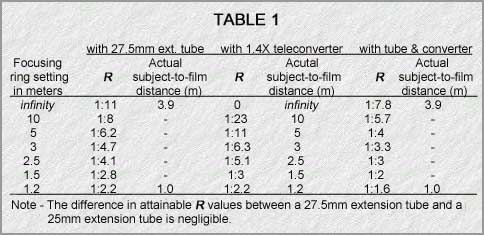 Similar R values are obtained with other 300mm lenses. Nevertheless, it is worth noting that only the EF Canon 300/4 IS and the Sigma lens can focus closer than 2 m (1.5 and 1.2 m, respectively).
The Nikon extension tubes will not autofocus. The Kenko tubes (namely the Uniplus Tube 25) overcome that limitation and will autofocus (a little slower than with just the lens) and maintains matrix metering as well. The use of such a long lens for taking close-ups also has important effects on the perspective and the visual impact of the image. In fact, higher focal lengths lead to reduced angles of view (AOV). The angle of view depends on the focal length, F (mm), and the reproduction ratio, R, according to the following equation: where d is the diagonal (mm) of the picture (43.27 mm in the case of 24x36). At infinity, R = 0 (a subject at infinity will be reproduced with a nil size on the film) and the angle of view depends on the focal length only. Table 2 shows the AOV values as a function of both the focal length and the reproduction ratio.  Therefore, longer focal lengths permit greater isolation of the subject from the background.
I believe that the AF Sigma 300/4 Apo Macro lens is one of the most versatile tools for the nature photographer. It's suitable for wildlife as well as landscape photography. Coupled to a high-quality 1.4 X teleconverter, you get a 420/5.6, more compact than most of the 400/5.6 lenses available. It's a great performer in close-ups, particularly when mated to an unobtrusive 25-30 mm extension tube, thus allowing magnifications close to 0.5 X at surprisingly long working distances. Do you know any reason why I should not put it into my photo backpack?
Since 1991, Riccardo has been member of AFNI, the Association of Italian Nature Photographers. Since 1993 he has been responsible for the activities in Rome of AFNI and in 1999 was appointed a member of the Board of Directors of the Society. As a freelance photographer, Riccardo contributes to both Italian and German magazines. His photos have appeared in Tutti Fotografi, Itinerari e Luoghi, Fotografie draußen, Oasis, Bell'Europa, Ali Natura, Arrivederci, Terra and Asferico. As a nature photographer, Riccardo is mainly devoted to landscape and close-up photography. He has been teaching macro-photography techniques for graduate students at the Human and Animal Biology Dept. of the University of Rome "La Sapienza". Additional information on close-up photography can be found on Riccardo's web site. |
|
|
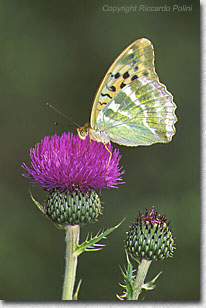 Among the telephoto lenses, the 300/4 (or f/4.5) can be considered the best compromise in terms of focal length, maximum aperture, weight and transportability. As a matter of fact, this lens represents the upper limit for taking hand-held photographs with ease. Moreover, the 300/4 is a useful tool in many situations, such as portrait, landscape and wildlife (namely mammals and birds) photography. In the latter case, the use of a 1.4 X teleconverter (which is always present in my backpack) increases the versatility of the lens on occasions where animals are at a longer distance. Nowadays, all the 300mm lenses available employ low dispersion elements which virtually eliminate chromatic aberrations. This fact ensures sharp vivid colors even with the aperture wide open.
Among the telephoto lenses, the 300/4 (or f/4.5) can be considered the best compromise in terms of focal length, maximum aperture, weight and transportability. As a matter of fact, this lens represents the upper limit for taking hand-held photographs with ease. Moreover, the 300/4 is a useful tool in many situations, such as portrait, landscape and wildlife (namely mammals and birds) photography. In the latter case, the use of a 1.4 X teleconverter (which is always present in my backpack) increases the versatility of the lens on occasions where animals are at a longer distance. Nowadays, all the 300mm lenses available employ low dispersion elements which virtually eliminate chromatic aberrations. This fact ensures sharp vivid colors even with the aperture wide open.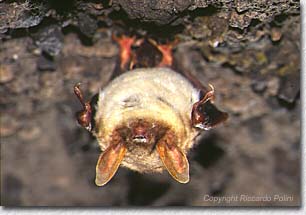 The above data demonstrate how versatile the Sigma lens is when coupled to a lightweight, unobtrusive 27.5 mm extension tube. In fact, this combination can focus between 4 and 1 meters, thus getting reproduction ratios in the 1:11-1:2.2 range. A really useful range for shooting shy animals, including reptiles, amphibians and insects. The working distance at the near limit (R = 1:2.2) is around 80 cm, a much more interesting performance than other available 200 or 180mm macro lenses, which get similar R values at working distances around 50 cm (focusing distances are approximately 70-75 cm).
The above data demonstrate how versatile the Sigma lens is when coupled to a lightweight, unobtrusive 27.5 mm extension tube. In fact, this combination can focus between 4 and 1 meters, thus getting reproduction ratios in the 1:11-1:2.2 range. A really useful range for shooting shy animals, including reptiles, amphibians and insects. The working distance at the near limit (R = 1:2.2) is around 80 cm, a much more interesting performance than other available 200 or 180mm macro lenses, which get similar R values at working distances around 50 cm (focusing distances are approximately 70-75 cm).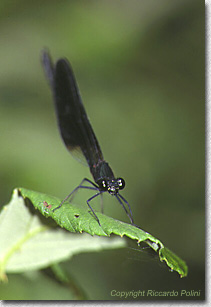 Along with the above technical considerations on attainable magnifications and perspective, I suppose you wish to know something about the quality of the AF Sigma 300/4. Well, I caught myself looking at the close-up pictures I took with the Sigma lens. The slides on the light-table showed vivid colors and when I checked them with the 8X loupe, both sharpness and contrast were very good.
Most of my close-ups have been shot with the aperture set at f/8-f/11. Nevertheless, pictures taken at f/4 are sharp and contrasty too, even at infinity.
Along with the above technical considerations on attainable magnifications and perspective, I suppose you wish to know something about the quality of the AF Sigma 300/4. Well, I caught myself looking at the close-up pictures I took with the Sigma lens. The slides on the light-table showed vivid colors and when I checked them with the 8X loupe, both sharpness and contrast were very good.
Most of my close-ups have been shot with the aperture set at f/8-f/11. Nevertheless, pictures taken at f/4 are sharp and contrasty too, even at infinity.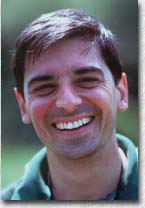 Riccardo Polini was born in Rome in 1961, where he is still based. He studied Chemistry at the University of Rome "La Sapienza" and since 1989 has been an Assistant Professor of General and Inorganic Chemistry at the 2nd University of Rome "Tor Vergata".
Riccardo Polini was born in Rome in 1961, where he is still based. He studied Chemistry at the University of Rome "La Sapienza" and since 1989 has been an Assistant Professor of General and Inorganic Chemistry at the 2nd University of Rome "Tor Vergata".